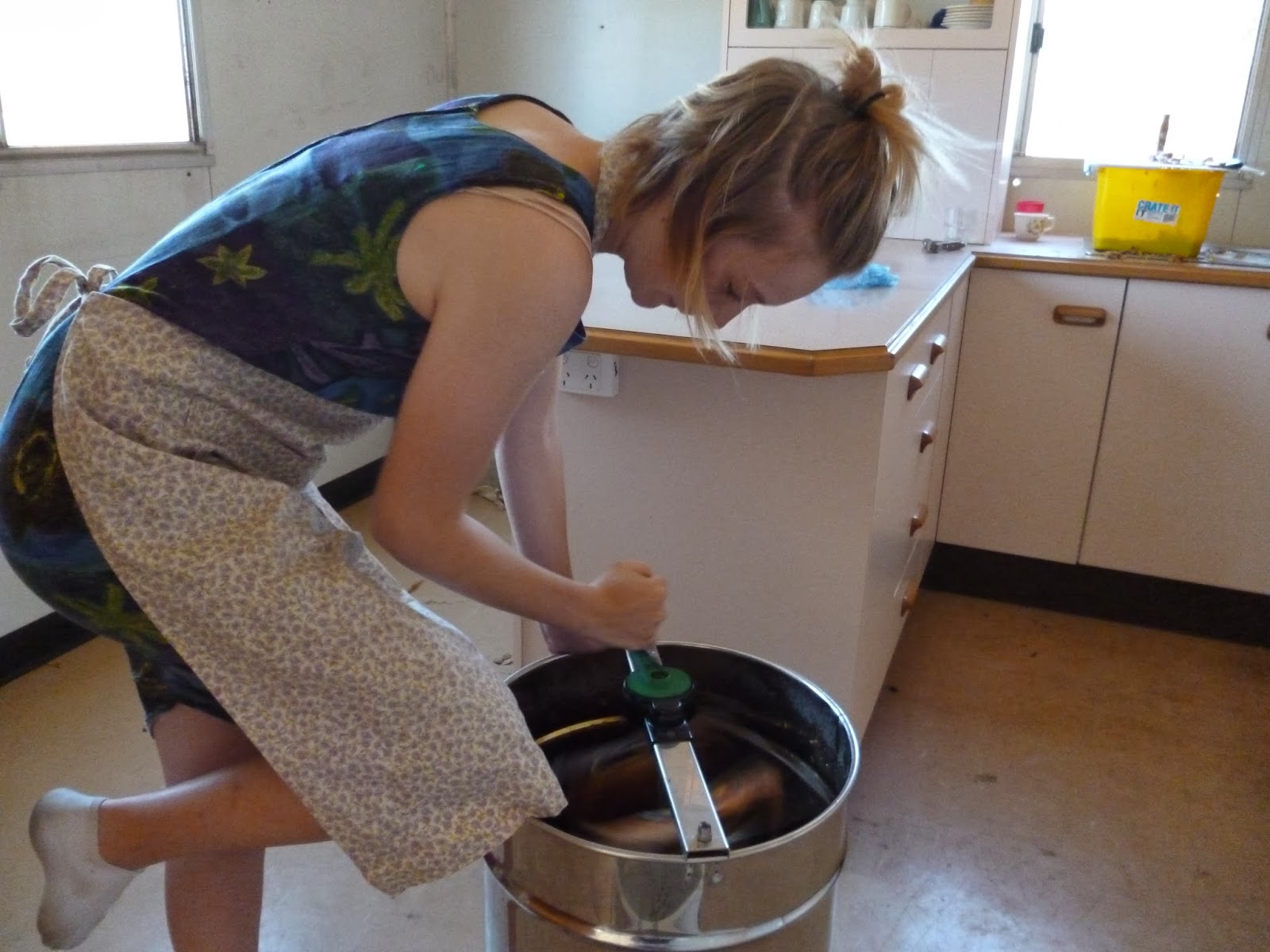2014 has been declared International Year of Family Farming
and so to celebrate I would like to share snippets of our family farm.
So once a week for the rest of the year you can join us here for a slow
tour of the farm.
The 2014 International Year of Family Farming (IYFF)
aims to raise the profile of family farming and smallholder farming by
focusing world attention on its significant role in eradicating hunger
and poverty, providing food security and nutrition, improving
livelihoods, managing natural resources, protecting the environment, and
achieving sustainable development, in particular in rural areas.
* * * * * * *
We're cracking up...
This is the result of a very dry hot couple of months. Our farm is all clay so as soon as we lose moisture the ground is covered in gaps like these. They fill quite quickly with heavy rain, but there is no run off into dams until they close up.
But despite the heat or maybe because of it, our dragon fruit has decided to flower for the very first time..
But moving right along. On the hottest of hot, hot days, Mark dressed up in his bee gear...
.... to rob the bees. Not such a good day for Mark to be all dressed up in the heat, but a good day for working the bees as they are more likely to be away foraging.
Mark smokes the bees to calm them.
He uses a brush to gently remove any bees still on the frame. He checks the frame for honey content. As we don't use a queen excluder, he also has to check for brood. Any frames with brood are put back into the hive. He also checks the health of the hives. He took 15 frames out of these two hives. The hives were very healthy and full of honey. These two hives are on the southern side of one of the irrigation ponds. The hives face north across the water ensuring that no one walks in front of their flight path.
Decapping the frame with a hot knife.
Spinning the frames to extract the honey
An empty frame. This will be washed and returned to the hive.
Sophie decided to give it a go.
Sophie stayed with us for 5 days as part of her Gold Duke of Edinburgh Award. This part of the award was a residential requirement which called for her to stay with someone she didn't know and volunteer. Of course there are strict regulations regarding this, but her supervisors was quite pleased with her choice. We enjoyed Sophie's company and she was keen to involve herself in all aspects of the farm, as well as a little painting off farm.
Pleased with herself, I think!
We were able to use The Hut (more on the hut soon) for the honey extraction for the first time. Much more room than the room I use to wash the vegies, or the kitchen in the house.
27 kilos all up. With another 3 hives to rob yet, there should be plenty for us and our customers. A jar went into each of the boxes yesterday.
Next week I'll let you in on a little secret that I've been eager to share with you!













I read in a Peter Andrews book, those cracks are the lanscapes way of ensuring water sinks deep into the soil when the next rains arrive. So you're fortunate to have such an efficient water storage system on your land. They fill the ground with moisture first, before sending run-off to the dams.
ReplyDeleteI know you said you have swales, do you find they help manage your water on the land better?
Without rain though, it's all a bit redundant. I hope you receive some rain soon. We could use some around here too.
Mark here Chris.
ReplyDeleteWe are indeed fortunate to have the clay as a base for building great colloidal soils. It can be frustrating to see rain not fill dams but the soil is where we want to store the water.
Swales do work in this same way though I think they only work some places and should not be over done. Making running water walk is a great way to allow for penetration to the earth.
Wow, all that honey looks very yummy!! We desperately need rain don't we?
ReplyDeleteHi Mark,
ReplyDeleteIn your case, definitely, too many swales would be overkill considering you have the natural cracks to catch water from shedding. I know of one case I've had to use several swales in succession (still working on them) to redirect water run-off, from our driveway. Only the space I have to work with is between 8 -15 metres on a slope. To prevent water being redirected onto the neighbours property, I have to do these staggered, short swales, down the slope. In some cases, lots of swales will be necessary - but I'm with you, that it shouldn't be overdone where possible.
Why waste the energy building something, if it's value could actually be detrimental? Thanks for answering my question. :)
Look at that lovely honey! Is it as dark as it seems, or is that simply the light in The Hut?
ReplyDeleteAnd I didn't know you didn't use a queen excluder. Very impressed, and will have to talk about this soon to your beekeeper!!
Loved the peek into your farm life Kate.........the Dragon fruit flower is amazing too.
ReplyDeleteThe honey looks absolutely delicious, despite the hot work for Mark it must be lovely to have your own hives and extract honey.
Well done Sophie on your choice of place to volunteer, I'm sure she would have learnt alot working with you two.
Claire :)